Medical expenses are an inevitable part of life. From routine check-ups to unexpected emergencies, healthcare costs can quickly add up, leaving individuals and families grappling with financial stress. Understanding how to navigate the complex world of medical expenses is crucial to managing your healthcare budget effectively. In this comprehensive guide, we will explore various aspects of medical expenses, offering insights and strategies to help you stay financially healthy while prioritizing your well-being.
Over the years, medical expenses have been on the rise, outpacing inflation rates and becoming a significant financial burden for many. Several factors contribute to the escalating costs of healthcare, including advances in medical technology, increased administrative expenses, and the growing demand for healthcare services.
Understanding the different types of medical expenses can help you better manage your healthcare budget. Medical expenses can be broadly categorized into the following:
Preventive care expenses include routine check-ups, vaccinations, screenings, and other measures aimed at maintaining good health and preventing illnesses. Many insurance plans cover these expenses fully or with minimal out-of-pocket costs.
These expenses encompass doctor visits, diagnostic tests, hospital stays, surgeries, and prescription medications. The cost of these services can vary widely based on factors like the type of treatment, the healthcare provider, and your insurance coverage.
Emergency medical expenses can be some of the most financially challenging. They include costs associated with unexpected injuries or illnesses that Prescription Medications
Prescription medications play a pivotal role in modern healthcare. They provide targeted treatment for a wide range of medical conditions, from chronic diseases to temporary ailments. However, navigating the world of prescription drugs can be complex and at times overwhelming. In this comprehensive guide, we will demystify prescription medications, offering insights, tips, and essential information to help you understand, access, and safely use these vital tools for maintaining health and well-being.
Prescription medications are pharmaceutical drugs that can only be dispensed with a valid prescription from a licensed healthcare provider. They are distinct from over-the-counter (OTC) medications, which can be purchased without a prescription. Here are some key reasons why prescription medications are essential in healthcare:
Prescription drugs are designed to address complex medical conditions, including chronic diseases like diabetes, hypertension, and autoimmune disorders.
Healthcare providers can tailor prescription medications to meet the specific needs of individual patients, adjusting dosages and medications as necessary.
Prescription medications are crucial for managing acute and chronic pain, allowing patients to lead more comfortable lives.
Antibiotics and antiviral medications are vital for treating infections and preventing the spread of contagious diseases.
In emergency situations, prescription medications such as epinephrine and anti-seizure drugs can be life-saving.
Before delving into the details of prescription medications, it’s crucial to understand the prescription process:
A healthcare provider diagnoses a medical condition or ailment and determines whether prescription medication is necessary.
If medication is required, the healthcare provider writes a prescription, specifying the drug, dosage, administration instructions, and duration of treatment.
The prescription is taken to a pharmacy, where a licensed pharmacist dispenses the medication. Pharmacies may provide printed instructions and counseling on proper usage.
Patients should be informed about their medications, including potential side effects, interactions, and any precautions or special instructions.
Prescription medications encompass a vast array of drugs, each designed to serve a specific purpose. Here are some common categories:
Prescribed to treat bacterial infections, antibiotics like amoxicillin and azithromycin are essential for managing illnesses such as strep throat and urinary tract infections.
Opioids, nonsteroidal anti-inflammatory drugs (NSAIDs), and other pain relievers are used to manage pain, whether it’s post-surgery, chronic, or related to injuries.
Drugs like statins and beta-blockers are prescribed to manage heart conditions such as high blood pressure and high cholesterol.
Antidepressants, antipsychotics, and anti-anxiety medications help individuals manage mental health conditions like depression, schizophrenia, and generalized anxiety disorder.
Insulin and oral medications are prescribed to regulate blood sugar levels in individuals with diabetes.
These medications are prescribed to reduce the activity of the immune system, often after organ transplantation or to manage autoimmune diseases.
Prescription antiviral drugs are used to treat viral infections such as HIV, herpes, and influenza.
Hormone replacement therapy (HRT) and other hormonal medications help manage conditions related to hormone imbalances.
Using prescription medications safely is of paramount importance. Here are essential guidelines to follow:
Always follow your healthcare provider’s instructions regarding medication dosage, frequency, and duration. Do not deviate from the prescribed regimen.
Thoroughly read the medication label, paying attention to warnings, potential side effects, and any special instructions.
Keep your healthcare provider informed about all medications, supplements, and over-the-counter drugs you are taking to avoid potential interactions.
Store prescription medications in a cool, dry place, away from children and pets. Some medications require refrigeration.
Dispose of expired or unused medications according to recommended guidelines to prevent accidental ingestion.
Familiarize yourself with potential side effects and contact your healthcare provider if you experience any adverse reactions.
Some medications interact negatively with alcohol or specific foods. Be aware of any such interactions and heed warnings.
Access to prescription medications is a critical aspect of healthcare. Here’s how to ensure you can obtain the medications you need:
Health insurance coverage can significantly reduce the cost of prescription medications. Choose a plan that aligns with your healthcare needs.
Review your insurance plan’s formulary to see which medications are covered. Consider asking your healthcare provider to prescribe medications on the formulary.
Many pharmaceutical companies offer patient assistance programs for individuals who cannot afford their medications. Research whether you qualify for such programs.
Pharmacy prices can vary, so compare prices at different pharmacies to find the best deals. Generic versions of brand-name medications are often more affordable.
Some insurance plans offer mail-order pharmacy services, which can be more convenient and cost-effective for obtaining long-term medications.
Prescription medications are a cornerstone of modern healthcare, providing effective treatments for a wide range of medical conditions. By understanding the prescription process, different types of medications, and safe usage guidelines, individuals can make informed decisions about their healthcare. Access to prescription medications is essential, and patients should explore options to ensure affordability. When used responsibly and under the guidance of healthcare professionals, prescription medications can significantly improve health and quality of life.require immediate medical attention, such as ambulance services, emergency room visits, and urgent care.
Long-term care expenses are associated with chronic illnesses, disabilities, or conditions that require ongoing medical attention and assistance with daily activities. These costs can be substantial and may include nursing home care, home healthcare, and medical equipment.
Ancillary expenses refer to additional costs related to healthcare, such as transportation to medical appointments, lodging for out-of-town treatments, and caregiving expenses for family members.
Given the complexity of healthcare costs, it’s essential to have a strategy in place to manage your medical expenses effectively. Here are some practical tips to help you navigate the maze of medical bills:
Review your health insurance policy thoroughly. Understand what services are covered, the extent of coverage, and any deductibles, copayments, or coinsurance you are responsible for. Knowing your policy’s specifics can prevent surprises when the bills arrive.
Develop a budget that includes anticipated healthcare expenses. Factor in premiums, deductibles, copayments, and expected out-of-pocket costs for prescriptions and treatments. Having a clear budget can help you allocate funds accordingly.
Don’t hesitate to research and compare healthcare providers for non-emergency services. Prices can vary significantly, even for routine procedures. Many medical facilities offer pricing transparency tools to help you make informed choices.
HSAs and FSAs allow you to set aside pre-tax dollars for qualified medical expenses. These accounts can help you save money on healthcare costs while reducing your taxable income.
If you receive a high medical bill, don’t hesitate to negotiate with the healthcare provider or facility. They may offer discounts or payment plans to help you manage the expense.
Whenever possible, seek medical care from providers within your insurance network. This can substantially reduce your out-of-pocket expenses, as in-network providers have negotiated rates with your insurance company.
Consider setting up an emergency fund specifically for healthcare expenses. Having savings designated for medical emergencies can provide peace of mind and financial security.
Medical expenses can be a significant financial challenge, but with the right knowledge and proactive steps, you can navigate the healthcare system more effectively and mitigate the impact on your finances. Understanding your insurance coverage, budgeting for healthcare expenses, and exploring cost-saving options are essential strategies to help you manage medical costs while prioritizing your health and well-being.
Remember, your health is an invaluable asset. By taking a proactive approach to managing medical expenses, you can maintain your physical and financial well-being in the face of rising healthcare costs.

